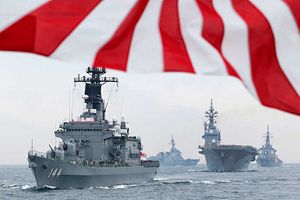In the early morning hours of August 29, 2017 many Japanese citizens in the northern prefectures were awakened by a jarring J-Alert notice warning that a missile from North Korea was headed in Japan’s direction. The test of Pyongyang’s new intermediate range ballistic missile (IRBM) – the so-called Hwasong-12 – had a trajectory that flew over Japan’s northern island of Hokkaido. The missile test added to Japan’s sense of vulnerability in the face of the region’s growing threats. Indeed, the August 29 test appeared to break the threshold of ballistic missile overflights of Japan’s airspace – an informal practice that the North had avoided up until that point. Pyongyang then followed up its initial test over Japan with a subsequent Hwasong-12 test in September that also had a trajectory over northern Japan but traveled a distance much farther than the earlier launch.
The intensity of North Korea’s missile program – both in terms of frequency of tests and speed of enhanced capabilities – is presenting Japan’s defense community with very difficult strategic choices. The Japanese defense community is simultaneously grappling with limited budgets, looming concerns about the U.S. role in the region, and a host of other needs beyond deterring and defending against Pyongyang’s bellicosity…
Instability on the Korean Peninsula, along with deep uncertainty and anxiety about the non-traditional rhetoric from the White House, continues to shape Japan’s defense policy. There are other important drivers as well, especially growing threat perceptions in Tokyo regarding China’s assertiveness in the region and the rapid modernization of the People’s Liberation Army Navy (PLAN) and the Chinese Coast Guard. The touchpoint of Japan’s concern focuses on the maritime domain, where Tokyo and Beijing are embroiled in a longstanding dispute over the Senkaku Islands, referred to as the Diaoyu in China, in the East China Sea. China and Japan also are loggerheads over maritime boundaries and natural resource extraction in the East China Sea. Moreover, Tokyo continues to levy pressure, both diplomatically and through its capacity building efforts with littoral states in Southeast Asia, on Beijing’s salami-slicing tactics in the South China Sea.

































